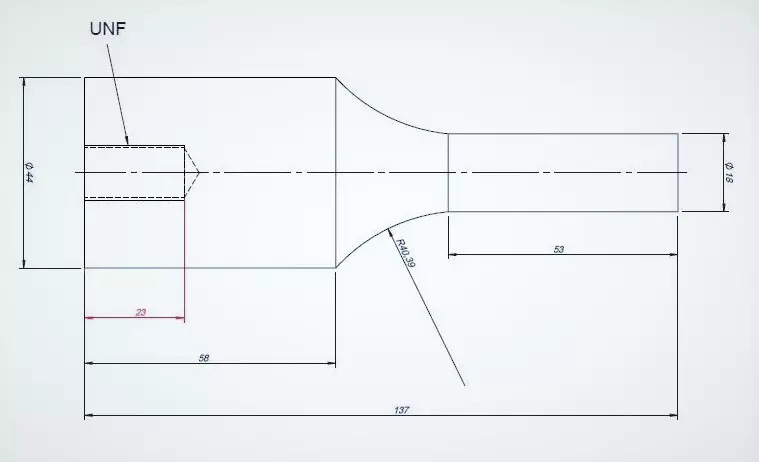FAQ: Do you sell some software for ultrasonic horn design? If so, could you send us all the available information and the cost, for both the software and the tuning and control elements of the sonotrodes? Mr. H.P.G.

Design of a 20 kHz cylindrical ultrasonic horn that can be tuned with the TRZ® Analyzer.
We do not sell software for this application, but you can use any software with dynamic analyses (for instance, SolidWorks), or analytical equations for basic geometries. We have experience in assisting our customers with sonotrodes replication and preventive and corrective maintenance (we offer this assistance along with our test instruments). However, we have limited experience in designing sonotrodes. Nevertheless, there are some points to consider that may be helpful. Sonotrodes design is not rocket science, but it may be a tough task for large parts and tridimensional joint profiles.
To develop a sonotrode, you should first establish the basic requisites:
1) Geometry;
2) Amplitude of vibration and wear resistance;
3) Frequency and tolerance range.
The sonotrode should provide amplitude of vibration with uniformity and free of coupled lateral modes. The sonotrode geometry should be compatible with the parts to be welded (geometry is also determinant to the sonotrode gain).
The amplitude of vibration and wear resistance should be compatible with the materials of the parts to be welded. The amplitude of vibration is determined by the converter, booster ratio and sonotrode gain (geometry related). Note: The welding joint should also be projected with energy concentrators to reduce the amplitude of vibration and energy required to perform the welding.
Frequency and its respective tolerance should be compatible with the power generator specs and also depends on the parts’ geometry, size and material. The tolerance is usually around ±0,25% of the nominal frequency (±50 Hz @ 20 kHz). The sonotrode should be manufactured slightly longer than needed and then carefully shortened to fine tune it to the desired frequency range. To test the sonotrode frequency, one can use our test instrument, TRZ® Analyzer. The tuning process is often necessary because the raw materials elastic properties change even within the same slab or billet because of microstructure anisotropy.
Below, find the links for whitepapers related to sonotrodes design:
-The design of ultrasonic resonators with wide output crosssections
Learn more about tuning of ultrasonic horns.
